当前位置:网站首页>Mobilenet series (5): use pytorch to build mobilenetv3 and learn and train based on migration
Mobilenet series (5): use pytorch to build mobilenetv3 and learn and train based on migration
2022-07-06 00:49:00 【@BangBang】
This blog realizes MobileNetV3 Code for , Reference resources pytorch Officially realized mobilenet Source code
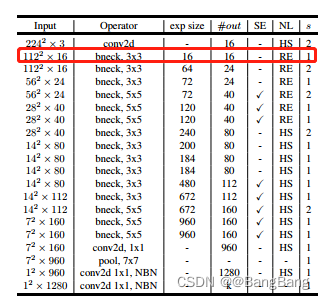
The details of the MobileNetV3 Network explanation , Refer to the post :MobileNet series (4):MobileNetv3 Network details
Code details
open model_v3.py file
- take channel Adjust to the nearest 8 Integer multiple
def _make_divisible(ch,divisor=8,min_ch=None):
if min_ch is None:
min_ch=divisor
new_ch=max(min_ch,int(ch+divisor/2)//divisor*divisor)
if new_ch <0.9*ch:
new_ch += divisor
return new_ch
- V3 Convolution structure of network
stay V3 Convolution used in Networks , It's basically :Convolution Conv +BN+ Activation function, Here we define a convolution classConvBNActivation
class ConvBNActivation(nn.Sequential):
def __init__(self,
in_planes:int,
out_planes:int,
kernel_size:int =3,
stride:int =1,
groups:int=1,
norm_layer:Optional[Callable[...,nn.Module]]=None,
activation_layer:Optional[Callable[...,nn.Module]]=None
):
padding=(kernel_size-1)//2
if norm_layer is None:
norm_layer =nn.BatchNorm2d
if activation_layer is None:
activation_layer = nn.ReLU6
super(ConvBNActivation,self).__init__(nn.Conv2d(in_channels=in_planes,
out_channels=out_planes,
kernel_size=kernel_size,
stride=stride,
padding=padding,
groups=groups,
bias=False,
norm_layer(out_planes),
activation_layer))
- SE modular
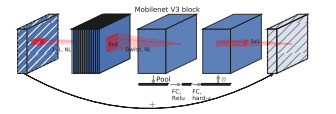
- Before Blog in , We talked about
SEmodular , It is actually two full connection layers . For the first fully connected layer , Its number of nodes is the input characteristic matrix channel Of1/4, The number of nodes in the second full link layer is the same as that of the input characteristic matrix channel Is consistent .
Be careful : The activation function of the first convolution layer isReLU, The activation function of the second convolution layer makesh-sigmoidActivation function .
SE The code of the module is as follows :
class SqueezeExcitaion(nn.Module):
def __init__(self,input_c:int,squeeze_factor:int=4):
super(SqueezeExcitaion,self).__init__()
squeeze_c=_make_divisible(input_c//squeeze_factor,8)
self.fc1 = nn.Conv2d(input_c,squeeze_c,1)
self.fc2 = nn.Conv2d(squeeze_c,input_c,1)
def forward(self,x:Tensor) -> Tensor:
scale = F.adaptive_avg_pool2d(x,output_size=(1,1))
scale =self.fc1(scale)
scale=F.relu(scale,inplace=True)
scale=self.fc2(scale)
scale=F.hardsigmoid(scale,inplace=True)
return scale * x
The network configuration InvertedResidualConfig
in the light of MobileNetv3 Parameters of each layer , The parameters are shown in the following table :
Network parameter configuration class :InvertedResidualConfig
class InvertedResidualConfig:
def __init__(self,
input_c:int,
kernel:int,
expanded_c:int,
out_c:int,
use_se:bool,
activation:str,
stride:int,
width_multi:float) #width_multi Convolution layer uses channel Magnification factor of
self.input_c=self.adjust_channels(input_c,width_multi)
self.kernel=kernel
self.expanded_c=self.adjust_channels(expanded_c,width_multi)
self.out_c=self.adjust_channels(out_c,width_multi)
self.use_se=use_se
self.use_hs=ativation=="HS" #whether using h-switch activation
self.stride=stride
@staticmethod
def adjust_channels(channels:int,width:float):
return _make_divisivle(channels*width_multi,8)
bneck modular
mobilenectv3 The network consists of a series of bneck Stacked ,bneck Before the module detailed reference Blog .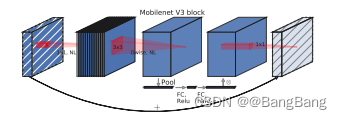
Create a class InvertedResidual Inherit nn.Module
class InvertedResidual(nn.Module):
def __init__(self,
cnf:InvertedResidualConfig,
norm_layer:Callable[...,nn.Module]):
super(InvertedResidual,self).__init__()
if cnf.stride not in [1,2]:
raise ValueError("illegal stride value.")
self.use_res_connect=(cnf.stride ==1 and cnf.input_c=cnf.out_c)
layers:List[nn.Module] = []
# Use nn.Hardswish pytorch Version needs to be 1.7 Or more
activation_layer = nn.Hardswish if cnf.use_hs else nn.ReLU
#expand
# In the network structure , first bneck Of input channel and exp size equal , That is, it didn't pass 1x1 Convolution dimension , So the first one bneck No, 1x1 Convolution
if cnf.expanded_c ! = cnf.input_c: # Equal no 1x1 Convolution dimension , Unequal means 1x1 Convolution dimension
layers.append(ConvBNActivation(cnf.input_c,
cnf.expanded_c,
kernel_size=1,
norm_layer=norm_layer,
activation_layer=activation_layer
))
# depthwise
layers.append(ConvBNActivation(
cnf.expanded_c,
cnf.expanded_c,
kernel_size=cnf.kernel,
stride=cnf.stride,
groups=cnf.expanded_c, # depthwise Convolution groups= The channel number
norm_layer=norm_layer,
activation_layer=activation_layer
))
if cnf.use_se:
layers.append(SqueezeExcitaion(cnf.expaned_c))
# 1x1 Reduced dimensional convolution layer
layers.append(ConvBNActivation( cnf.expanded_c,
cnf.out_c,
kernel_size=1,
norm_layer=norm_layer,
activation_layer=nn.Identity # Linear activation
))
self.block=nn.Sequential(*layers)
self.out_channel=cnf.out_c
def forward(self,x:Tensor) -> Tensor
result=self.block(x)
if self.use_res_connect:
result +=x
return result
- structure MobileNetV3
class MobileNetV3(nn.Module):
def __init__(self,
inverted_residual_setting:List[InvertedResidualConfig],
last_channel:int,
num_classes:int =1000,
block:Optional[Callable[...,nn.Module]]=None,
norm_layer:Optional[Callable[...,nn.Module]]=None
):
super(MobileNetVe,self).__init__()
if not inverted_residual_setting:
raise ValueError("The inverted_residual_setting should not be empty")
elif not (isinstance(inverted_residual_setting,List) and
all([isInstance(s,InvertedResidualConfig) for s in inverted_residual_setting]))
raise TypeError("The inverted_residual_setting should be List[InvertedResidualConfig]")
if block is None:
block = InvertedResidual
if norm_layer is None:
norm_layer=partial(nn.BatchNorm2d,eps=0.001,momentum=0.01)
layers:List[nn.Module] = []
# building first layer
fisrtconv_output_c =inverted_residual_setting[0].input_c
layers.append(ConvBNActivation(3,
firstconv_output_c,
kernel_size=3,
stride=2,
norm_layer=norm_layer,
activation_layer=nn.Hardwish))
# building inverted residual block
for cnf in inverted_residual_setting:
layers.append(block(cnf,norm_layer))
# building last several layers
lastconv_input_c=inverted_residual_setting[-1].out_c
lastconv_output_c=6*lastconv_input_c
layers.append(ConvBNActivation(lastconv_input_c,
lastconv_output_c,
kernel_size=1,
norm_layer =norm_layer,
activation_layer=nn.Hardswish
))
self.features =nn.Sequential(*layers)
self.avgpool=nn.AdaptiveAvgPool2d(1)
self.classifier=nn.Sequential(nn.Linear(lastconv_output_c,last_channel),
nn.Hardswish(inplace=True),
nn.Dropout(p=0.2,inplace=True),
nn.Linear(last_channel,num_classes))
# initial weights
for m in self.modules():
if isinstance(m.nn.Conv2d):
nn.init.kaiming_normal_(m.weight,mode="fan_out")
if m.bias is not None:
nn.init.zeros_(m.bias)
elif isinstance(m,(nn.BatchNorm2d,nn.GroupNorm)):
nn.init.ones_(m.weight)
nn.init.zers_(m.bias)
elif isinstance(m,nn.Linear):
nn.init.normal_(m.weight,0,0.01)
nn.init.zeros(m.bias)
def _forward_impl(self,x:Tensor) ->Tensor:
x=self.features(x)
x=self.avgpool(x)
x=torch.flatten(x,1)
x=self.classifier(x)
return x
def forward(self,x:Tensor) ->Tensor:
return self._forward_impl(x)
- structure MobileNetV3 Large
def mobilenet_v3_large(num_classes: int = 1000,
reduced_tail: bool = False) -> MobileNetV3:
""" Constructs a large MobileNetV3 architecture from "Searching for MobileNetV3" <https://arxiv.org/abs/1905.02244>. weights_link: https://download.pytorch.org/models/mobilenet_v3_large-8738ca79.pth Args: num_classes (int): number of classes reduced_tail (bool): If True, reduces the channel counts of all feature layers between C4 and C5 by 2. It is used to reduce the channel redundancy in the backbone for Detection and Segmentation. """
width_multi = 1.0
bneck_conf = partial(InvertedResidualConfig, width_multi=width_multi)
adjust_channels = partial(InvertedResidualConfig.adjust_channels, width_multi=width_multi)
reduce_divider = 2 if reduced_tail else 1
inverted_residual_setting = [
# input_c, kernel, expanded_c, out_c, use_se, activation, stride
bneck_conf(16, 3, 16, 16, False, "RE", 1),
bneck_conf(16, 3, 64, 24, False, "RE", 2), # C1
bneck_conf(24, 3, 72, 24, False, "RE", 1),
bneck_conf(24, 5, 72, 40, True, "RE", 2), # C2
bneck_conf(40, 5, 120, 40, True, "RE", 1),
bneck_conf(40, 5, 120, 40, True, "RE", 1),
bneck_conf(40, 3, 240, 80, False, "HS", 2), # C3
bneck_conf(80, 3, 200, 80, False, "HS", 1),
bneck_conf(80, 3, 184, 80, False, "HS", 1),
bneck_conf(80, 3, 184, 80, False, "HS", 1),
bneck_conf(80, 3, 480, 112, True, "HS", 1),
bneck_conf(112, 3, 672, 112, True, "HS", 1),
bneck_conf(112, 5, 672, 160 // reduce_divider, True, "HS", 2), # C4
bneck_conf(160 // reduce_divider, 5, 960 // reduce_divider, 160 // reduce_divider, True, "HS", 1),
bneck_conf(160 // reduce_divider, 5, 960 // reduce_divider, 160 // reduce_divider, True, "HS", 1),
]
last_channel = adjust_channels(1280 // reduce_divider) # C5
return MobileNetV3(inverted_residual_setting=inverted_residual_setting,
last_channel=last_channel,
num_classes=num_classes)
- structure MobileNetV3 Small
def mobilenet_v3_small(num_classes: int = 1000,
reduced_tail: bool = False) -> MobileNetV3:
""" Constructs a large MobileNetV3 architecture from "Searching for MobileNetV3" <https://arxiv.org/abs/1905.02244>. weights_link: https://download.pytorch.org/models/mobilenet_v3_small-047dcff4.pth Args: num_classes (int): number of classes reduced_tail (bool): If True, reduces the channel counts of all feature layers between C4 and C5 by 2. It is used to reduce the channel redundancy in the backbone for Detection and Segmentation. """
width_multi = 1.0
bneck_conf = partial(InvertedResidualConfig, width_multi=width_multi)
adjust_channels = partial(InvertedResidualConfig.adjust_channels, width_multi=width_multi)
reduce_divider = 2 if reduced_tail else 1
inverted_residual_setting = [
# input_c, kernel, expanded_c, out_c, use_se, activation, stride
bneck_conf(16, 3, 16, 16, True, "RE", 2), # C1
bneck_conf(16, 3, 72, 24, False, "RE", 2), # C2
bneck_conf(24, 3, 88, 24, False, "RE", 1),
bneck_conf(24, 5, 96, 40, True, "HS", 2), # C3
bneck_conf(40, 5, 240, 40, True, "HS", 1),
bneck_conf(40, 5, 240, 40, True, "HS", 1),
bneck_conf(40, 5, 120, 48, True, "HS", 1),
bneck_conf(48, 5, 144, 48, True, "HS", 1),
bneck_conf(48, 5, 288, 96 // reduce_divider, True, "HS", 2), # C4
bneck_conf(96 // reduce_divider, 5, 576 // reduce_divider, 96 // reduce_divider, True, "HS", 1),
bneck_conf(96 // reduce_divider, 5, 576 // reduce_divider, 96 // reduce_divider, True, "HS", 1)
]
last_channel = adjust_channels(1024 // reduce_divider) # C5
return MobileNetV3(inverted_residual_setting=inverted_residual_setting,
last_channel=last_channel,
num_classes=num_classes)
Network training
Training image data set download train.py
import os
import json
import torch
import torch.nn as nn
import torch.optim as optim
from torchvision import transforms, datasets
from tqdm import tqdm
from model_v2 import MobileNetV2 # Can be replaced with MobileNetV3 MobileNetV3-Large MobileNetV3-Smalll
def main():
device = torch.device("cuda:0" if torch.cuda.is_available() else "cpu")
print("using {} device.".format(device))
batch_size = 16 # Adjust according to the size of the video memory
epochs = 5
data_transform = {
"train": transforms.Compose([transforms.RandomResizedCrop(224),
transforms.RandomHorizontalFlip(),
transforms.ToTensor(),
transforms.Normalize([0.485, 0.456, 0.406], [0.229, 0.224, 0.225])]),
"val": transforms.Compose([transforms.Resize(256),
transforms.CenterCrop(224),
transforms.ToTensor(),
transforms.Normalize([0.485, 0.456, 0.406], [0.229, 0.224, 0.225])])}
data_root = os.path.abspath(os.path.join(os.getcwd(), "../..")) # get data root path
image_path = os.path.join(data_root, "data_set", "flower_data") # flower data set path
assert os.path.exists(image_path), "{} path does not exist.".format(image_path)
train_dataset = datasets.ImageFolder(root=os.path.join(image_path, "train"),
transform=data_transform["train"])
train_num = len(train_dataset)
# {'daisy':0, 'dandelion':1, 'roses':2, 'sunflower':3, 'tulips':4}
flower_list = train_dataset.class_to_idx
cla_dict = dict((val, key) for key, val in flower_list.items())
# write dict into json file
json_str = json.dumps(cla_dict, indent=4)
with open('class_indices.json', 'w') as json_file:
json_file.write(json_str)
nw = min([os.cpu_count(), batch_size if batch_size > 1 else 0, 8]) # number of workers
print('Using {} dataloader workers every process'.format(nw))
train_loader = torch.utils.data.DataLoader(train_dataset,
batch_size=batch_size, shuffle=True,
num_workers=nw)
validate_dataset = datasets.ImageFolder(root=os.path.join(image_path, "val"),
transform=data_transform["val"])
val_num = len(validate_dataset)
validate_loader = torch.utils.data.DataLoader(validate_dataset,
batch_size=batch_size, shuffle=False,
num_workers=nw)
print("using {} images for training, {} images for validation.".format(train_num,
val_num))
# create model
net = MobileNetV2(num_classes=5) # Can be replaced with MobileNetV3 MobileNetV3-Large MobileNetV3-Smalll
# load pretrain weights
# download url: https://download.pytorch.org/models/mobilenet_v2-b0353104.pth
model_weight_path = "./mobilenet_v2.pth" # Can replace MobileNetV3 MobileNetV3-Large MobileNetV3-Smalll Pre training weight of
assert os.path.exists(model_weight_path), "file {} dose not exist.".format(model_weight_path)
pre_weights = torch.load(model_weight_path, map_location=device)
# delete classifier weights
pre_dict = {
k: v for k, v in pre_weights.items() if net.state_dict()[k].numel() == v.numel()}
missing_keys, unexpected_keys = net.load_state_dict(pre_dict, strict=False)
# freeze features weights
for param in net.features.parameters():
param.requires_grad = False
net.to(device)
# define loss function
loss_function = nn.CrossEntropyLoss()
# construct an optimizer
params = [p for p in net.parameters() if p.requires_grad]
optimizer = optim.Adam(params, lr=0.0001)
best_acc = 0.0
save_path = './MobileNetV2.pth'
train_steps = len(train_loader)
for epoch in range(epochs):
# train
net.train()
running_loss = 0.0
train_bar = tqdm(train_loader)
for step, data in enumerate(train_bar):
images, labels = data
optimizer.zero_grad()
logits = net(images.to(device))
loss = loss_function(logits, labels.to(device))
loss.backward()
optimizer.step()
# print statistics
running_loss += loss.item()
train_bar.desc = "train epoch[{}/{}] loss:{:.3f}".format(epoch + 1,
epochs,
loss)
# validate
net.eval()
acc = 0.0 # accumulate accurate number / epoch
with torch.no_grad():
val_bar = tqdm(validate_loader)
for val_data in val_bar:
val_images, val_labels = val_data
outputs = net(val_images.to(device))
# loss = loss_function(outputs, test_labels)
predict_y = torch.max(outputs, dim=1)[1]
acc += torch.eq(predict_y, val_labels.to(device)).sum().item()
val_bar.desc = "valid epoch[{}/{}]".format(epoch + 1,
epochs)
val_accurate = acc / val_num
print('[epoch %d] train_loss: %.3f val_accuracy: %.3f' %
(epoch + 1, running_loss / train_steps, val_accurate))
if val_accurate > best_acc:
best_acc = val_accurate
torch.save(net.state_dict(), save_path)
print('Finished Training')
if __name__ == '__main__':
main()
Model to predict
predict.py
import os
import json
import torch
from PIL import Image
from torchvision import transforms
import matplotlib.pyplot as plt
from model_v2 import MobileNetV2
def main():
device = torch.device("cuda:0" if torch.cuda.is_available() else "cpu")
data_transform = transforms.Compose(
[transforms.Resize(256),
transforms.CenterCrop(224),
transforms.ToTensor(),
transforms.Normalize([0.485, 0.456, 0.406], [0.229, 0.224, 0.225])])
# load image
img_path = "../tulip.jpg"
assert os.path.exists(img_path), "file: '{}' dose not exist.".format(img_path)
img = Image.open(img_path)
plt.imshow(img)
# [N, C, H, W]
img = data_transform(img)
# expand batch dimension
img = torch.unsqueeze(img, dim=0)
# read class_indict
json_path = './class_indices.json'
assert os.path.exists(json_path), "file: '{}' dose not exist.".format(json_path)
json_file = open(json_path, "r")
class_indict = json.load(json_file)
# create model
model = MobileNetV2(num_classes=5).to(device)
# load model weights
model_weight_path = "./MobileNetV2.pth"
model.load_state_dict(torch.load(model_weight_path, map_location=device))
model.eval()
with torch.no_grad():
# predict class
output = torch.squeeze(model(img.to(device))).cpu()
predict = torch.softmax(output, dim=0)
predict_cla = torch.argmax(predict).numpy()
print_res = "class: {} prob: {:.3}".format(class_indict[str(predict_cla)],
predict[predict_cla].numpy())
plt.title(print_res)
print(print_res)
plt.show()
if __name__ == '__main__':
main()
- List item
Model prediction effect 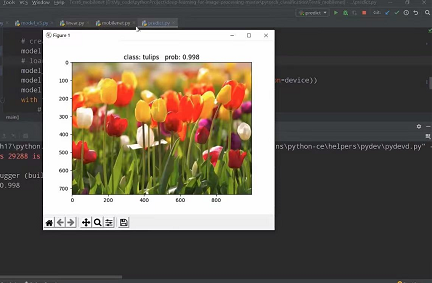
Source download
边栏推荐
- Power query data format conversion, Split Merge extraction, delete duplicates, delete errors, transpose and reverse, perspective and reverse perspective
- golang mqtt/stomp/nats/amqp
- [groovy] compile time meta programming (compile time method interception | method interception in myasttransformation visit method)
- The detailed page returns to the list and retains the original position of the scroll bar
- 猿桌派第三季开播在即,打开出海浪潮下的开发者新视野
- 激动人心,2022开放原子全球开源峰会报名火热开启
- Calculate sha256 value of data or file based on crypto++
- Beginner redis
- NLP text processing: lemma [English] [put the deformation of various types of words into one form] [wet- > go; are- > be]
- Extension and application of timestamp
猜你喜欢
![Cf:d. insert a progression [about the insert in the array + the nature of absolute value + greedy top-down]](/img/9e/c933f454a39d906a407e4d415f0b87.png)
Cf:d. insert a progression [about the insert in the array + the nature of absolute value + greedy top-down]

Questions about database: (5) query the barcode, location and reader number of each book in the inventory table
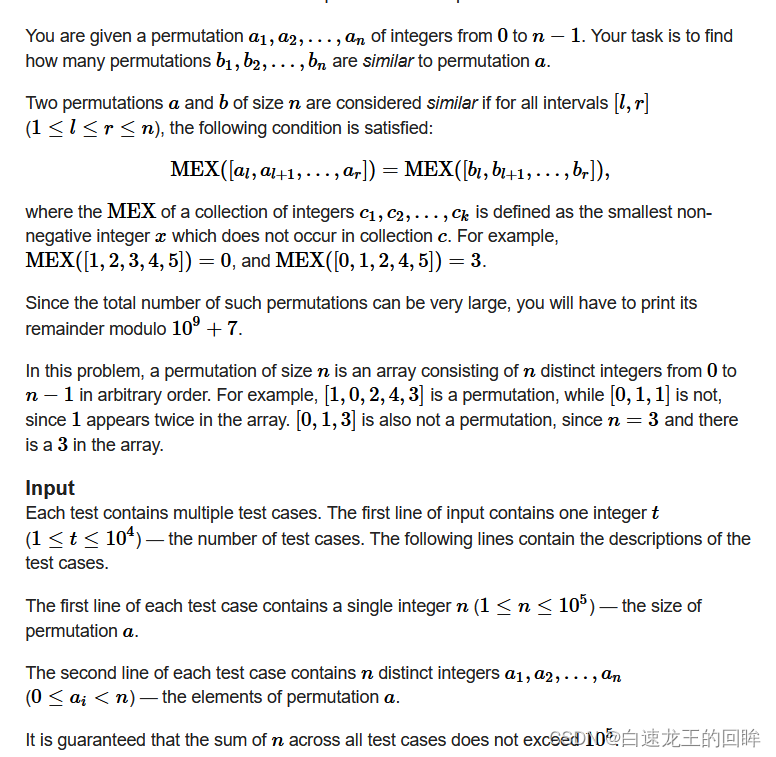
cf:C. The Third Problem【关于排列这件事】
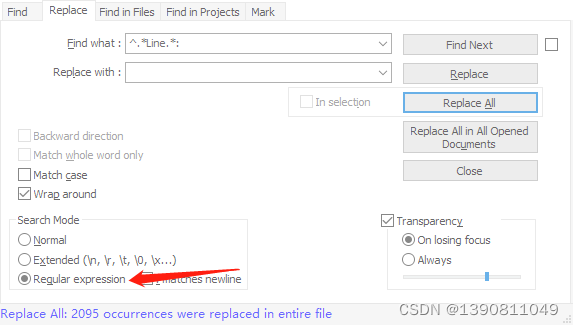
Notepad++ regular expression replacement string

ubantu 查看cudnn和cuda的版本

MobileNet系列(5):使用pytorch搭建MobileNetV3并基于迁移学习训练

猿桌派第三季开播在即,打开出海浪潮下的开发者新视野
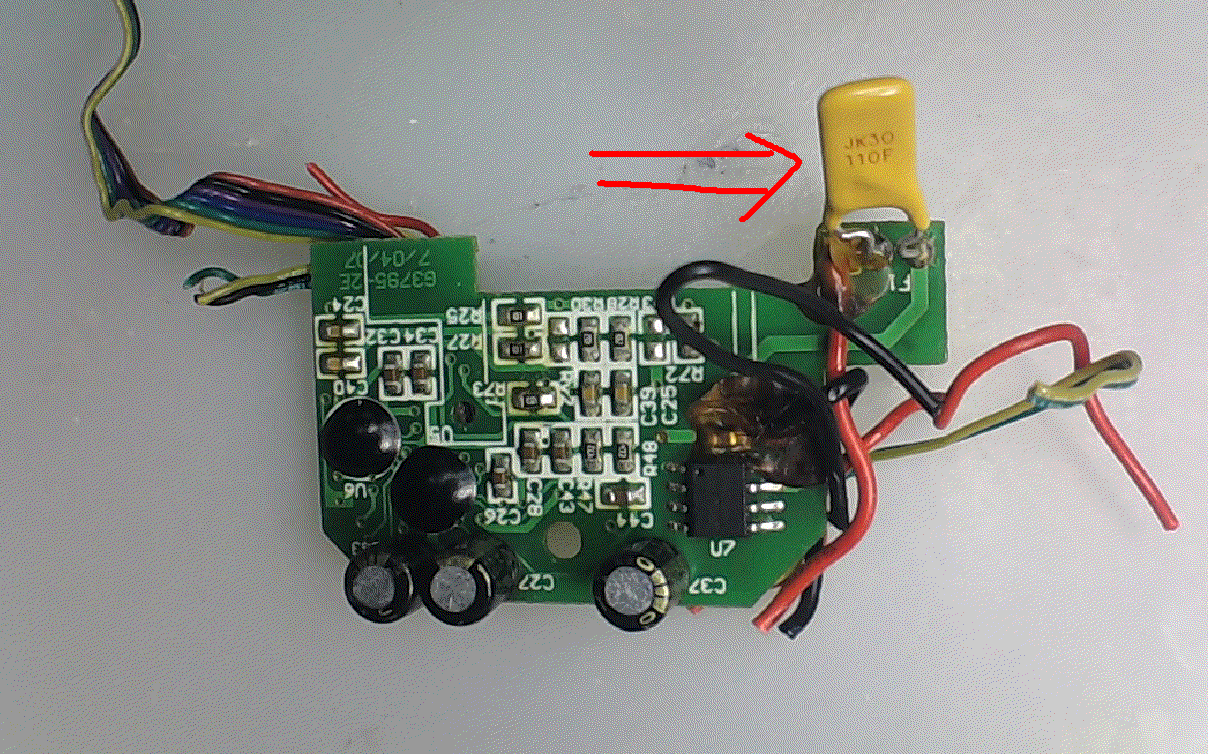
可恢复保险丝特性测试
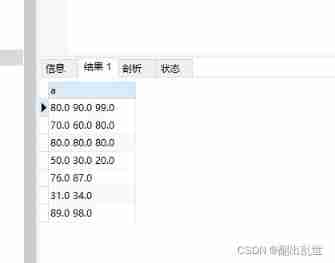
MYSQL GROUP_ The concat function realizes the content merging of the same ID
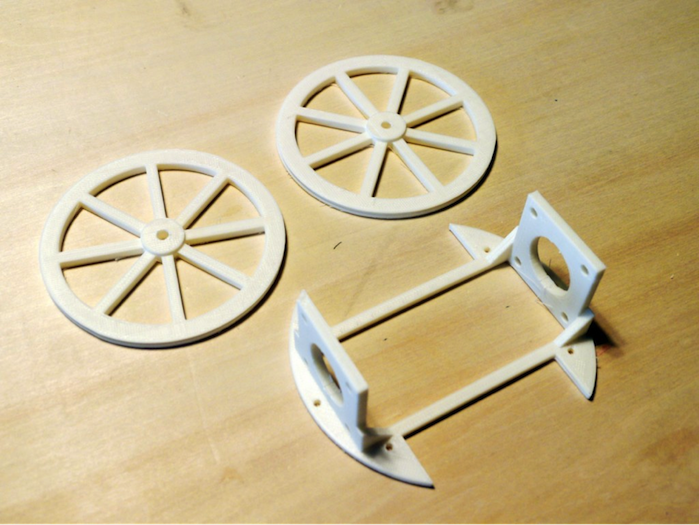
Comment faire votre propre robot
随机推荐
uniapp开发,打包成H5部署到服务器
看抖音直播Beyond演唱会有感
激动人心,2022开放原子全球开源峰会报名火热开启
Novice entry depth learning | 3-6: optimizer optimizers
curlpost-php
Idea远程提交spark任务到yarn集群
《强化学习周刊》第52期:Depth-CUPRL、DistSPECTRL & Double Deep Q-Network
MySQL存储引擎
95后CV工程师晒出工资单,狠补了这个,真香...
如何制作自己的机器人
Basic introduction and source code analysis of webrtc threads
Natural language processing (NLP) - third party Library (Toolkit):allenlp [library for building various NLP models; based on pytorch]
Date类中日期转成指定字符串出现的问题及解决方法
MySQL storage engine
Leetcode 450 deleting nodes in a binary search tree
Browser reflow and redraw
数据分析思维分析方法和业务知识——分析方法(二)
Keepalive component cache does not take effect
[groovy] compile time meta programming (compile time method interception | method interception in myasttransformation visit method)
DD's command